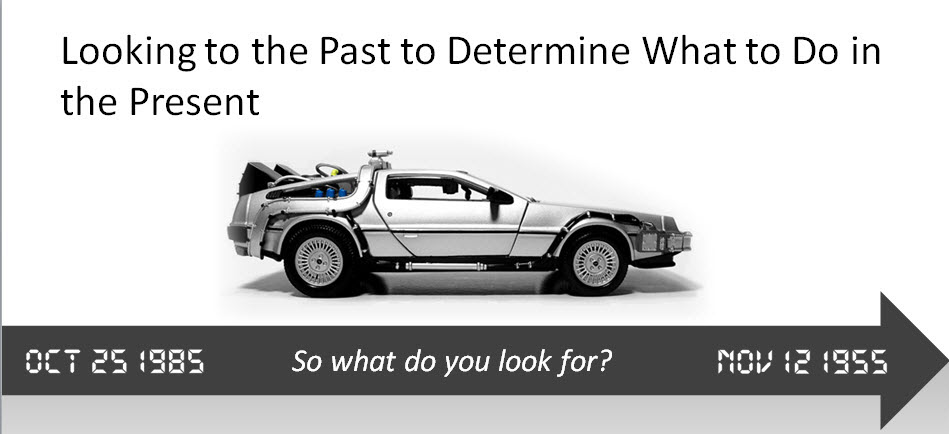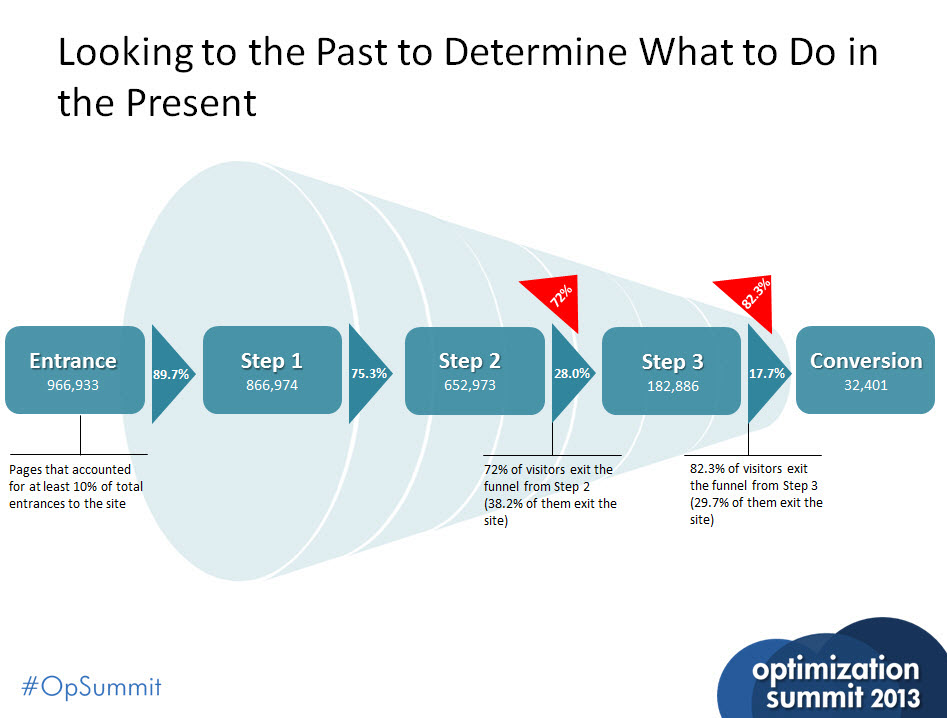The past can teach you a lot about your customers and where opportunities for testing and optimization exist in your sales funnel – if you take the time to look.
Looking to the past to guide current marketing efforts  was one the key takeaways from Adam Lapp, Associate Director of Optimization and Strategy, MECLABS, and Benjamin Filip’s, Manager of Data Sciences, MECLABS, Industry Deep Dive session, “Hoverboards and DeLoreans: Taking your optimization from 0 to 88 mph,” from MarketingSherpa and MarketingExperiments Optimization Summit 2013.
was one the key takeaways from Adam Lapp, Associate Director of Optimization and Strategy, MECLABS, and Benjamin Filip’s, Manager of Data Sciences, MECLABS, Industry Deep Dive session, “Hoverboards and DeLoreans: Taking your optimization from 0 to 88 mph,” from MarketingSherpa and MarketingExperiments Optimization Summit 2013.
“If you’re just starting out in testing and optimization, looking to the past [performance] is a great segue into brainstorming ideas for future testing,” Ben said.
Today’s MarketingExperiments blog post features three tips from Adam and Ben’s session you can use to aid your testing and optimization efforts.
Tip #1. Look to your historical data
According to Ben and Adam, a good way to mitigate some of the classic struggles of testing and optimization (money, time and drain on resources) is to first look to your historical data as your guide to where opportunities exist.
“Historical data is the only way to determine where to start,” Ben said.
Tip #2. Analyze your sales funnel
Adam and Ben also explained how looking at your historical data in combination with a funnel analysis can show you what people are in your funnel and where the big drop-offs are taking place.
Here were a few questions they suggested marketers try to answer when undertaking a funnel analysis:
- Where are my biggest leakage points in the sales funnel?
- Where are people going?
- Why are they exiting the site?
- Are people visiting specific places on the site more than any others?
Tip #3. Determine where opportunities exist
Another interesting (albeit somewhat counterintuitive) insight Adam and Ben offered on discovering new opportunities for testing was that leaks in a sales funnel don’t necessarily mean an opportunity for testing exists.
“You want to try and invest in the tools that will have the greatest impact on your ROI,” Ben explained.
Instead, they suggested marketers always build profit analysis models to determine which testing opportunities will offer the greatest potential ROI.
Related Resources:
Marketing Optimization: Are you tracking website optimization ROI?
Online Marketing Testing: A research manager’s view of balancing risk and reward





